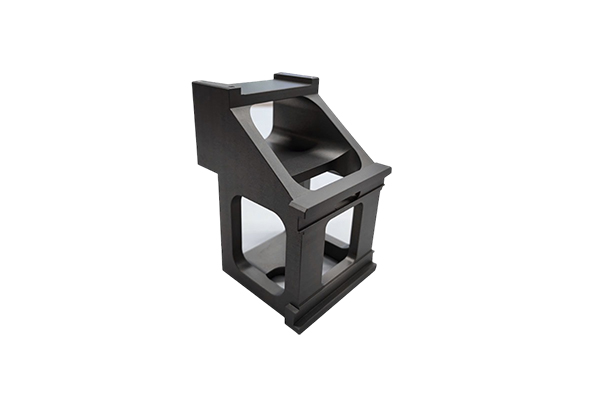How to optimize the aerodynamic performance of Low Altitude Aircraft Impeller Blades under low-altitude complex airflow conditions?
Release Time : 2024-09-26
Optimizing the aerodynamic performance of Low Altitude Aircraft Impeller Blades under low-altitude complex airflow conditions is the key to ensuring flight safety and efficiency. Faced with variable wind speed, wind direction and possible turbulence, blade design needs to take into account multiple factors to achieve optimal performance.
First, through advanced computational fluid dynamics (CFD) simulation technology, the low-altitude complex airflow environment can be accurately simulated to analyze the aerodynamic response of blades under different working conditions. This helps designers to deeply understand the interaction mechanism between blades and airflow and identify key factors affecting aerodynamic performance, such as angle of attack and lift-to-drag ratio.
Based on the CFD simulation results, designers can fine-tune parameters such as blade shape, airfoil, and twist angle. By optimizing the geometric configuration of the blade, the aerodynamic drag can be reduced and the lift coefficient can be increased, thereby enhancing the stability and efficiency of the blade in low-altitude complex airflow. At the same time, a reasonable blade twist distribution helps to maintain optimal aerodynamic performance in different flight stages.
In addition, the use of advanced material technology and manufacturing processes is also an important way to improve the aerodynamic performance of blades. The application of lightweight and high-strength materials can reduce the weight of the blades, reduce the moment of inertia, and improve the response speed. The precise processing technology can ensure the geometric accuracy and surface quality of the blades and reduce aerodynamic losses.
In summary, optimizing the aerodynamic performance of Low Altitude Aircraft Impeller Blades requires the comprehensive use of CFD simulation, parameter optimization, material selection, and manufacturing processes. Through the implementation of these measures, the aerodynamic performance of the blades under low-altitude complex airflow conditions can be significantly improved, providing a strong guarantee for the safe flight and efficient operation of low-altitude aircraft.
First, through advanced computational fluid dynamics (CFD) simulation technology, the low-altitude complex airflow environment can be accurately simulated to analyze the aerodynamic response of blades under different working conditions. This helps designers to deeply understand the interaction mechanism between blades and airflow and identify key factors affecting aerodynamic performance, such as angle of attack and lift-to-drag ratio.
Based on the CFD simulation results, designers can fine-tune parameters such as blade shape, airfoil, and twist angle. By optimizing the geometric configuration of the blade, the aerodynamic drag can be reduced and the lift coefficient can be increased, thereby enhancing the stability and efficiency of the blade in low-altitude complex airflow. At the same time, a reasonable blade twist distribution helps to maintain optimal aerodynamic performance in different flight stages.
In addition, the use of advanced material technology and manufacturing processes is also an important way to improve the aerodynamic performance of blades. The application of lightweight and high-strength materials can reduce the weight of the blades, reduce the moment of inertia, and improve the response speed. The precise processing technology can ensure the geometric accuracy and surface quality of the blades and reduce aerodynamic losses.
In summary, optimizing the aerodynamic performance of Low Altitude Aircraft Impeller Blades requires the comprehensive use of CFD simulation, parameter optimization, material selection, and manufacturing processes. Through the implementation of these measures, the aerodynamic performance of the blades under low-altitude complex airflow conditions can be significantly improved, providing a strong guarantee for the safe flight and efficient operation of low-altitude aircraft.







